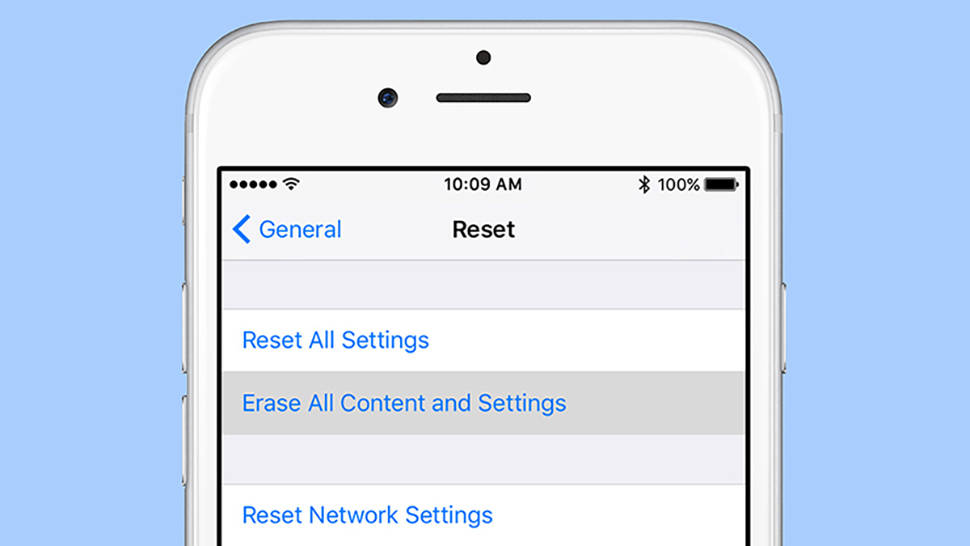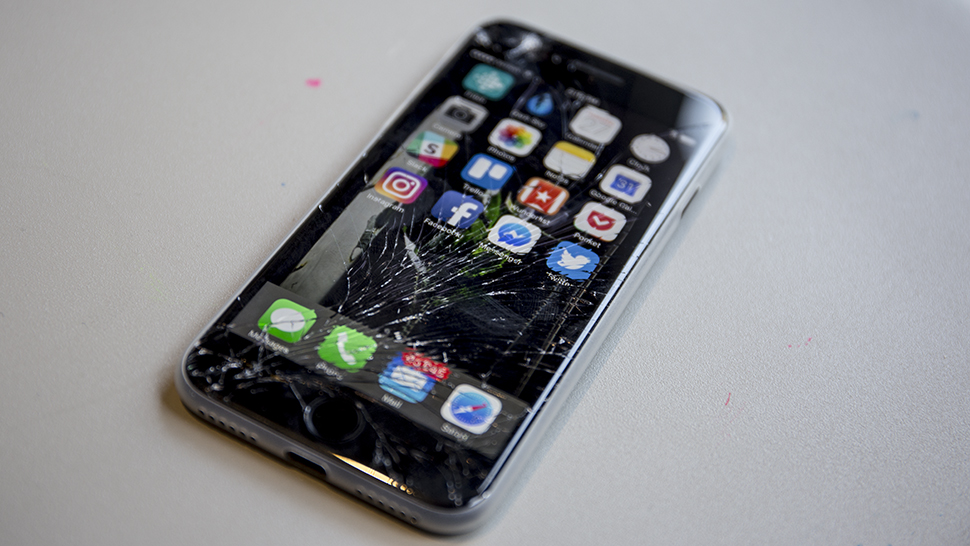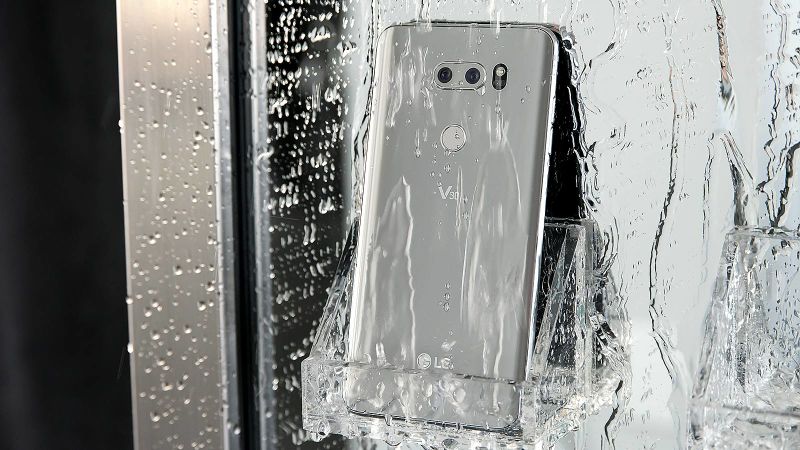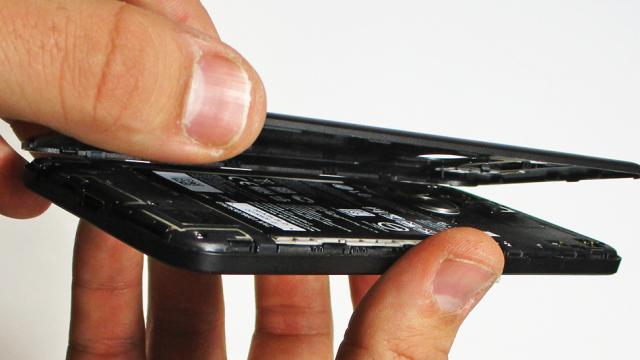Having a broken phone is not a situation you want to be in for long but there’s always the question of whether to stump up the cash for a professional repair or have a go at fixing it yourself (assuming you’ve no insurance or warranty coverage). This should be your guide for deciding when to tackle some DIY repairs and when to leave it to the experts.
Image: Isaiah Schultz/iFixit
Software Bugs
Software problems are the easiest to fix on a phone, though you shouldn’t automatically assume you can fix everything. Issues with one app in particular can often be sorted out by uninstalling and reinstalling the app, which should clear out any corrupted temporary data and reset everything back to normal.
If you’re noticing crashes and slowdowns more generally on your phone, we’ve written plenty of guides in the past on improving performance on Android and iOS — freeing up as much storage space as you possibly can is usually the way to go, as you can’t exactly upgrade the CPU and RAM. You should always install OS and app updates too, though these days it’s pretty hard to avoid doing that.

Image: Apple
The most effective and comprehensive fix for software problems and slowdowns on your phone is always a hard factory reset, putting your phone back to the way it was when you first got it before all those nonsense apps and huge photo libraries took over. It’s not difficult to do, but you need to back up all your stuff first.
On stock Android devices, go to System then Reset in Settings (the version of Android you’re using may differ slightly); on iOS, you need to go to General and Reset inside Settings. After a few minutes, your phone will completely forget who you are, and you’ll have to start the setup process again.
Dropped Phone
A dropped phone isn’t always cracked screens. Sometimes it causes smaller issues that can lead to frustrating hassles. It can mess with the contacts in the charging mechanism, so if your handset gives you the option to switch to wireless charging rather than a cable, see if that’s enough to bring your phone back to life.
A hard reset can sometimes bring a dropped phone back to life too, though the odds aren’t great. On an iPhone, you need to press and hold the Sleep/Wake button and the Volume Down button for at least ten seconds until you (hopefully) see the Apple logo; on Android, check the instructions from your manufacturer, but on the Pixel you just press and hold the power button for at least ten seconds.

Image: Apple
Beyond those attempts there’s not a great deal you can fix it yourself unless you know your way around your phone as well as the folks at iFixit. It’s possible that some careful disassembling can fix whatever’s gone wrong ,but it’s something of a long shot.
Chances are that the drop has permanently damaged or dislodged something inside your phone, so a professional repair shop is really your best option — they will be able to take the phone apart for you, spot what’s gone wrong, and tell you whether the component can be fixed or replaced.
Smashed Phone
A drop for your phone is usually associated with a screen smash. This could be anything from small and barely noticeable to large and stretching all across the display, and that’s also going to affect how you go about fixing it. If the damage is particularly bad then you’re going to need to replace the screen.
You can, if you want, tackle this yourself if you trust your hand-eye coordination and think you’ve got the skills for the job. iFixit has some excellent guides for Android and iOS so you can follow the instructions to get a new screen in place. Check the guide for your phone first and you’ll know how much effort is involved.

Image: Alex Cranz/Gizmodo
You’re going to need a screwdriver and a replacement screen, which shouldn’t be too difficult to source given the number of people prone to dropping their phones out of their pockets. You might want to compare the price of a new display against the price of getting everything fixed professionally to help decide what you want to do.
There’s no shame in admitting defeat and taking the phone in somewhere to be repaired by the experts. Apple will do it for you, as will some other manufacturers, and so will your local repair shop — these people do screen replacements all the time, so they’re likely to be much better and faster at it.
Dunked Phone
Thankfully just about all modern-day handsets are now water resistant, though there are some outliers. If you’ve got a handset that’s not water resistant, and it’s taken a dunk, then you can try a few tricks to get it working yourself — it really depends on the extent of the damage and the make of phone.
Before you do anything else, turn the phone off, pop the SIM card out just in case, and wipe the handset down with a towel to see how much harm might have been done. Give it an hour or two to try out, and see if it comes back on. The key is to let the drying happen as naturally as possible, even if that requires a bit of extra patience. So don’t be afraid to wait 24 hours or longer before trying it out again.

Image: Sam Rutherford/Gizmodo
If more drying is required, avoid using a hair dryer as the intensity of the heat can cause extra damage. According to the last local repair shop we visited in person, putting your phone in a bag of rice doesn’t make any difference to the moisture in the insides, but drying phones in a sealed container with silica gel is another common recommendation you might want to try.
Still the best bet is to just be patient and wait. If you turn the device on to soon it will get damaged. Once water damager has occurred there’s one solution left: Head to a professional phone repair service. The staff there won’t be able to work miracles, but they will be better able to safely disassemble and reassemble the phone components and allow them to try out components separately. If the phone still can’t be recovered, it’s time to think about an upgrade.
Dying Phone
In most cases water resistance in phones comes at the cost of a removable battery. That means when you’re battery starts to fail (usually about 3-4 years after purchase) it is time to either buy a new phone, or replace the battery in your current one. You’ll know it’s test when it doesn’t hold a charge for longer than a day, but you can double check by downloading a battery app like Battery Doctor (available for Android and iOS).

Image: Alex Cranz/Gizmodo
If you know your way around tiny tools and have steady hands than it’s not terribly difficult to replace the battery on a smartphone, it just takes a lot of patience and care. Batteries can usually be found for about $US10 ($13)-$US15 ($19) online, and tutorials are available on Youtube or via iFixit.
If cracking your phone open and saving a few bucks doesn’t appeal than any repair shop can do replace it in about fifteen minutes. They charge anywhere from $US50 ($63) to $US100 ($125), so definitely shop around before walking into the closest repair shop.
If the shop doesn’t have the time (or the battery for your device) you’ll need to contact the manufacturer and hope it doesn’t charge too high a fee for a battery replacement. Apple, for example, charges a flat $US80 ($100) for the repair. That’s a lot, but it is still less than the cost of a new phone.
